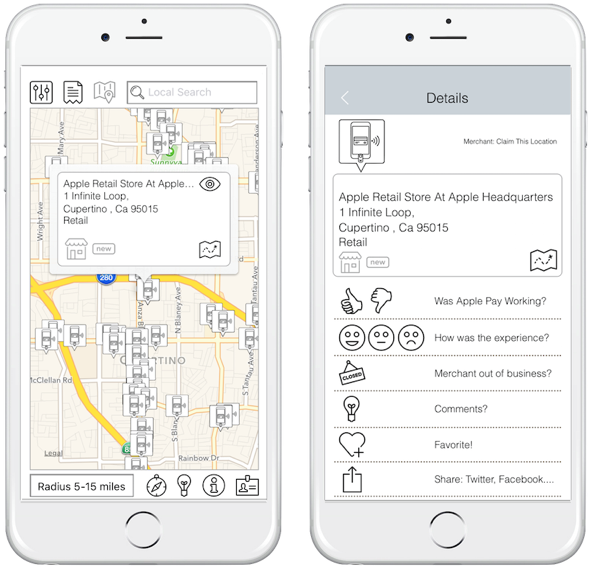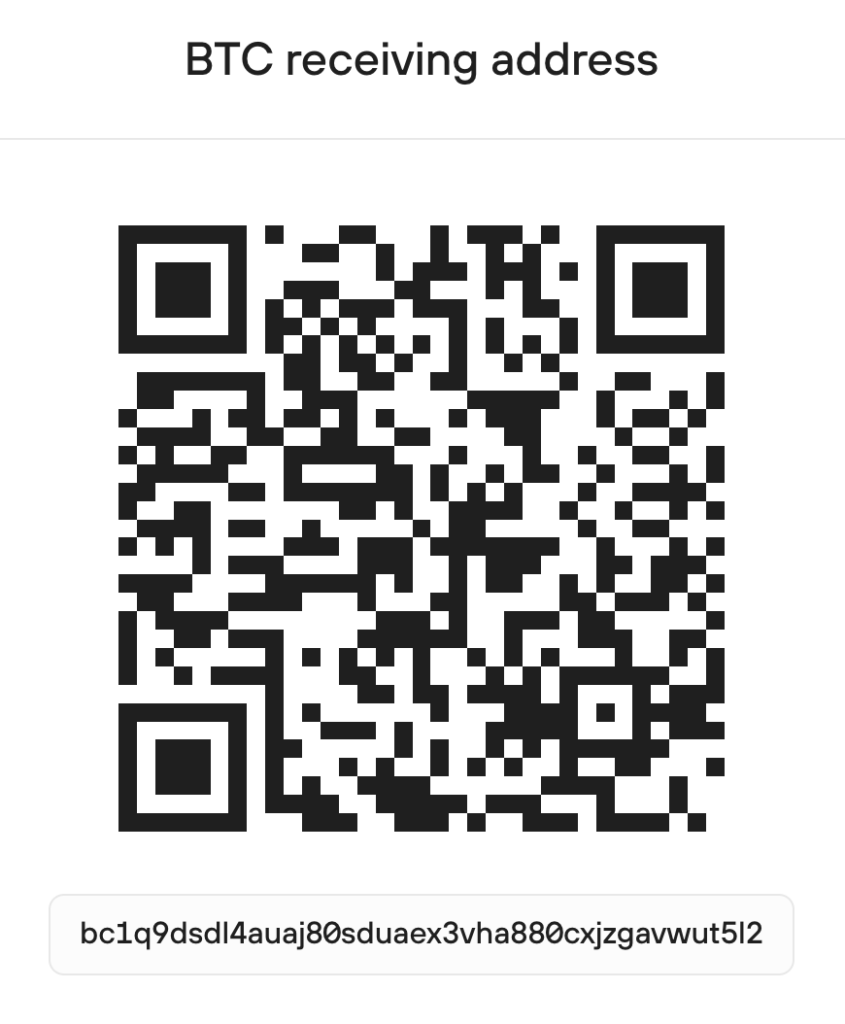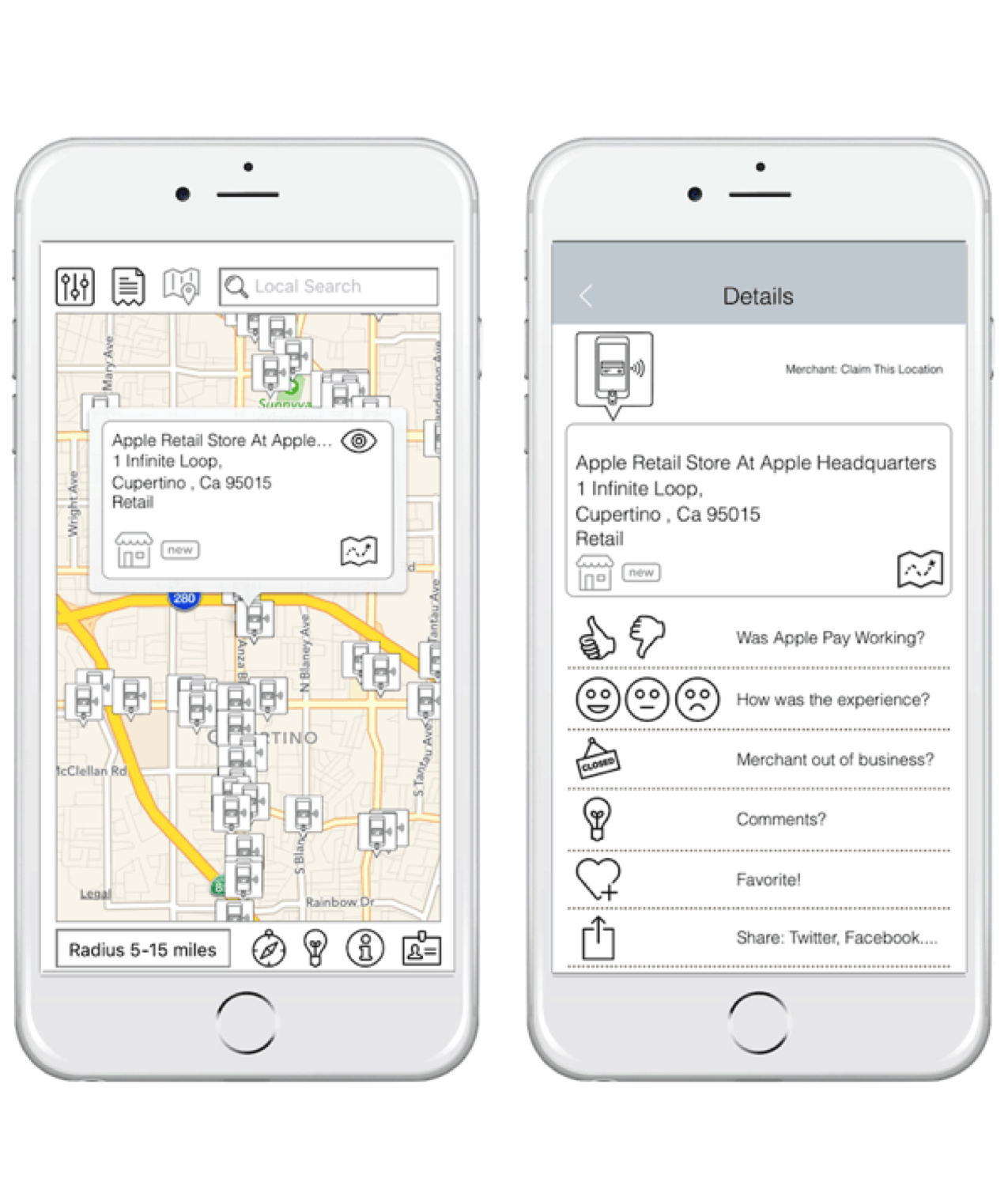This Store Accepts Apple Pay
“It is challenging to determine whether a merchant terminal accepts contactless payments (i.e., if the NFC reader is enabled). In some stores, even if the POS terminal displays a contactless symbol, the reader is not turned on. The lack of clear marketing creates customer uncertainty about whether they can use a Pay wallet at that merchant location. They may be looking for each Pay wallet’s respective logo instead of a contactless symbol on the POS terminal and hesitate to pay or ask questions, especially when there is a long checkout line” —Elisa Tavilla, Boston Federal Reserve Bank [7]
It was a warm summer day in 2010 and I just completed my first map of merchants that have NFC equipment installed, in the US. This was a few years before Apple Pay, but I was certain, what I called the iWallet would be released by Apple [1]. I had worked in the payments industry since the 1980s and had conducted 100s of empirical studies and field research. In 2010 on this summer day I knew Apple would have a rather large problem with the “Chicken/Egg” issues, one is: merchants may accept NFC payments but there is (is still not) a central reporting system to notify anyone, even the merchant themselves. In my 2010 study, I determined that many companies had some minor success to motivate merchants to have NFC from the Chase Blink card [2] of 2005 up to the first versions of Google Wallet and the ISIS SoftCard system [3]. Each system appeared to be proprietary but in fact all worked together.
Fast forward to early 2013 I found even more compelling public information that confirmed the iWallet program via a series of patents Apple was applying for using NFC [4]. By this point in time I have built an automatic system based on decades of relationship in the payments industry of current NFC merchant locations active and the ones that become inactive for various reasons. My associates at both Visa and MasterCard found the data I built to be fascinating as they did not have, and still do not have a easy and verified way to know NFC locations in the US. I used the data from the map to conduct over a dozen studies related to NFC adoption for a number of clients, including one that I received anonymously through an obvious third part in the Bay Area of California.
“Apple Will Never Be In Payments Brian”
I wrote many postings on Quora related to payments and the iWallet in particular. It was quite controversial and contrarian at the time, as “disruption” was in the air for payment startups and they demanded sometimes in very angry tones for me to stop my heretical postings as “there is no way Apple will be in payments in any way” and “startups will dominate it”. I continued to write and I continued to consult with many payment companies urging them not to invest in general mobile wallets because the “land holders” will one day take back the land.
On October 16, 2014, Apple, the landholder of iOS took back the land and left every other general mobile wallet out to dry in the wind. On October 16, 2014, Apple announced Apple Pay. Apple said this:
“Apple Pay in stores is fast and easy to use. Simply hold iPhone near the contactless reader while keeping a finger on Touch ID. In addition to the 262 Apple retail stores in the US, availability from leading retailers at launch include: Aéropostale, American Eagle Outfitters, Babies”R”Us, BJ’s Wholesale Club, Bloomingdale’s, Champs Sports, Chevron and Texaco retail stores including ExtraMile, Disney Store, Duane Reade, Footaction, Foot Locker, House of Hoops by Foot Locker, Kids Foot Locker, Lady Foot Locker, Macy’s, McDonald’s, Nike, Office Depot, Panera Bread, Petco, RadioShack, RUN by Foot Locker, SIX:02, Sports Authority, SUBWAY, Toys”R”Us, Unleashed by Petco, Walgreens, Wegmans and Whole Foods Market. In addition, many others will add support this year, such as Anthropologie, Free People, Sephora, Staples, Urban Outfitters, Walt Disney Parks and Resorts and more.”
Apple Pay appeared to only be available at Apple started out with just 220,000 locations. I remember yelling out at the event “no, there are over 1.5 million locations” the people around me, including one dear friend that worked at Apple for a long time looked in shock. I knew I had unique data on NFC locations in the US, however I did not think Apple would choose such an almost impossibly low location count.
I went home that evening and talked to my wife and kids about the event. My oldest son asked “why would they would do that?”, I had no clear answers. Although I have had many off the record interactions with Apple over the decades, I did not have a direct contact on the Apple Pay team. I spent the rest of the week reaching out with some success. I was told it was conservative numbers that will change. I mentioned how many locations I had surfaced and they were shocked.
~—~
~—~
I love new payment technology and have used an NFC card since 2005 in the US. When Apple Pay became active, I went out and tried it at merchant locations on my database. Just about every merchant, over 50 in the first few days, were shocked for a number of reasons. The biggest reason is “I did not know my terminal could do that”.
I assumed Apple would do something about merchant discovery and waited. Almost one year later I was taken back by the reality that Apple would do very little to help Apple Pay users surface and discover merchants. Thus was my frustration I decided to code an app and to see if I could in some way help solve the merchant discovery quagmire. By November 10th, 2015 I released the iOS app Pay Finders [5], with over 2.7 million North America Apple Pay locations [6], it is now over 5.9 million locations in North America. The company was and still is, just me. It was and is a hobby and it is an app. Find Pay Finders here.
At the time of the Pay Finders launch ReCode journalist Jason Del Rey wrote [6]:
“One of the knocks on Apple Pay is that people don’t know where they can use it, since a store needs to have the right checkout equipment to accept the tap-to-pay service. Self-proclaimed Apple fanboy and payments industry veteran Brian Roemmele hopes to change that.
Roemmele, a well-known entrepreneur, consultant and researcher in the world of digital payments, has created Pay Finders, an iPhone app that shows people which businesses around them accept the mobile payments service. The app is not the first app of its kind, but Roemmele hopes it will be the most accurate by combining crowd-sourced data from Apple Pay enthusiasts with data from industry companies and other sources.
‘Why don’t people use Apple Pay?” Roemmele asked rhetorically. “A, I didn’t know the business accepted Apple Pay or B, I forgot.’”
Today Pay Finders data is used by millions of people. Some users consult the app daily. Along the way I was told that no one would care about a map of Apple Pay locations. Perhaps, but it turns out there are a lot more that care to use Apple Pay and will actively not only seek out locations, but to supply new locations and to verify locations in the directory. Pay Finders is also the largest crowd sourced NFC map in the world.

Apple, a company I do not hide my love for, did try to help discovery via a convoluted and ill conceived plan to use Yelp as the data source. This turns out to be useless and hopeless. Yelp has no real active way to confirm locations are active and no active way to full conclude a merchant location is no longer accepting Apple Pay.

This brings us back to the Boston Federal Reserve Bank report on mobile wallets [7]. Here is the key findings:
Key Findings
Overall, the team found this mobile payments research experience informative. Many members continue to use their mobile and digital wallets regularly, but none are ready to leave home without their physical wallets. Some of the team’s key findings include:
- Mobile wallet awareness continues to grow among consumers and merchants. When asked, some retail associates said that they have seen a slight increase in the number of customers using Pay wallets. While shopping, team members also saw a few other consumers using Apple Pay at various retailers.
- More education for consumers and employees on how mobile and digital wallets work is essential to achieving mass adoption. Staff awareness and levels of training vary significantly, sometimes within the same retailer and store location. Signage indicating wallet acceptance is inconsistent, creating customer confusion and negative experiences.
- Offering robust loyalty and rewards features can help to build adoption by incenting consumers to use mobile and digital payments.
- A consumer’s priority is to find a retailer that sells what he wants to buy rather than finding a merchant that accepts a digital or mobile wallet, especially since credit and debit card acceptance is ubiquitous. However, with an attractive value proposition (e.g., added convenience, efficiency, security, and/or savings), consumers may prefer to use a mobile or digital wallet if the option is available, leading to more frequent mobile wallet transactions (in-store and remote) that can help build consumer confidence and influence change in behavior.
Key finding number 4 confirms the exact reason why I built Pay Finders and why I harbor some frustrations with Apple. I still love Apple but they have not solved the problems presented in number 4, Pay Finders 2.0 has. The user will never need to open the app, the lock screen will tell them the moment they enter the store and in many cases at the checkout counter, that Apple Pay is accept. This functionality goes a long way in solving the key findings form the Boston Fed. I am contemplating the release of Pay Finders 2.0. Holding me back is cost, it will take a huge server load to do millions of push notifications. Also holding me back is the cost of 12 decimal place map location accuracy, that costs a bunch. Version 2.0 would have been out day one if I solved this financial issue.
To be clear, Apple Pay is still the fastest growing payment modality in history. It will continue to be the great success that it truly is. I just know that it can be far, far more successful and now the Boston Federal Reserve Bank agrees.
_____
[1] https://acceptingpayments.quora.com/iOS-7-Payment-Systems [2] http://www.creditcards.com/credit-card-news/chase-blink-card-quick-payments-1273.php [3] https://en.wikipedia.org/wiki/Softcard [4] https://acceptingpayments.quora.com/The-Apple-iWallet-Patent-Is-Granted-1 [5] http://PayFinders.com [6] http://www.recode.net/2015/11/10/11620524/where-can-you-pay-with-apple-pay-theres-an-app-for-that [7] https://www.bostonfed.org/publications/consumer-mobile-payments/boston-fed-team-puts-mobile-payments-to-the-test.aspx
~—~
~—~
Subscribe ($99) or donate by Bitcoin.
Copy address: bc1q9dsdl4auaj80sduaex3vha880cxjzgavwut5l2
Send your receipt to Love@ReadMultiplex.com to confirm subscription.


IMPORTANT: Any reproduction, copying, or redistribution, in whole or in part, is prohibited without written permission from the publisher. Information contained herein is obtained from sources believed to be reliable, but its accuracy cannot be guaranteed. We are not financial advisors, nor do we give personalized financial advice. The opinions expressed herein are those of the publisher and are subject to change without notice. It may become outdated, and there is no obligation to update any such information. Recommendations should be made only after consulting with your advisor and only after reviewing the prospectus or financial statements of any company in question. You shouldn’t make any decision based solely on what you read here. Postings here are intended for informational purposes only. The information provided here is not intended to be a substitute for professional medical advice, diagnosis, or treatment. Always seek the advice of your physician or other qualified healthcare provider with any questions you may have regarding a medical condition. Information here does not endorse any specific tests, products, procedures, opinions, or other information that may be mentioned on this site. Reliance on any information provided, employees, others appearing on this site at the invitation of this site, or other visitors to this site is solely at your own risk.
Copyright Notice:
All content on this website, including text, images, graphics, and other media, is the property of Read Multiplex or its respective owners and is protected by international copyright laws. We make every effort to ensure that all content used on this website is either original or used with proper permission and attribution when available.
However, if you believe that any content on this website infringes upon your copyright, please contact us immediately using our 'Reach Out' link in the menu. We will promptly remove any infringing material upon verification of your claim. Please note that we are not responsible for any copyright infringement that may occur as a result of user-generated content or third-party links on this website. Thank you for respecting our intellectual property rights.




